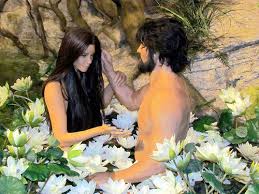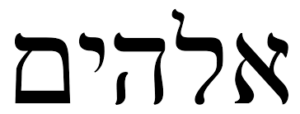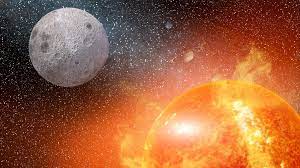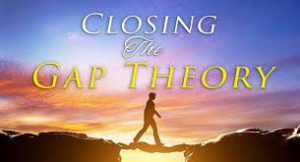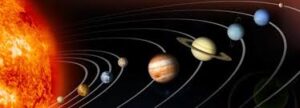Ax – Then the LORD God Made a Woman from the Rib of the Man 2: 18-25
Then the LORD God Made a Woman
from the Rib He had Taken Out of the Man
2: 18-25
Then the LORD God made a woman from the rib He had taken out of the man DIG: What is significant about God creating woman last? Male and female jointly express God’s image. What does that mean? What does it imply that the woman is a suitable helper for man? ADONAI Himself is often described as a Helper (Hosea 13:9; Psalm 115:9-11). What help does that give you in answering this question? How would you characterize the relationship between Adam and this woman? Between God and man? What makes this kind of relationship possible?
REFLECT: Is this kind of a relationship only theoretical? Or can it really work? What are the things that would get in the way of it working the way Elohim designed it? Even though men and women are equal in their relationship with each other, whom does ADONAI hold responsible when things go wrong (to see link click Bf –Your Desire Will Be For Your Husband, and He Will Rule Over You)?
God had a purpose in putting Adam in the Garden alone for a period of time. It was to show him that he had a need for companionship that the animals could not fulfill. Therefore, this section describes the creation of the first woman, Eve, and the institution of marriage. In addition, a minor theme in this section shows that man did not evolve from the animals, but is superior to them. Sorry PETA (People for the Ethical Treatment of Animals).
If there were any remaining questions as to whether the Bible teaches that man is simply an animal, related by common ancestry and evolution to all the other animals, the rest of this chapter will lay such an idea to rest. The first man and woman were unique and special creations of God, not to be compared with animals at all, but rather to be contrasted with them. The widespread belief that people evolved from apes is not only refuted by Scripture but also by all the facts of science. The missing links of Darwin’s day are still missing today. There have been many fossils of true human beings excavated by anthropologists and many fossils of true apes. To date, however, neither any living animals nor any fossil remains have ever been found to link animals with humans.49 More details will be given on this in the discussion of the Flood.
ADONAI, God, created us to be social beings, and Adam needed someone of equal status for fellowship, friendship, and intimacy. These are the basic needs of every human being, planted there by God Himself. Therefore, it is not surprising that the LORD would say: It is not good for the man to be alone (2:18a). This is the first mention of something that was not good. At the end of the sixth day of creation, Elohim saw everything that He had made and it was very good (1:31). The Hebrew word good describes that which is appropriate within the purpose of God. So even though everything else in creation was good, Adam was alone and that was not good. Although both the animals and man came from the ground (2:7 and 2:19), the animals could never provide man with the kind of companionship he really needed. In 2:18b God said: I will make him a helper (ezer, pronounced azer with a long sounding a, as in razor). The word helper is not demeaning because the term is used of God Himself as Israel’s helper in times of trouble (Exodus 18:4; Deuteronomy 33:7, 22, 26; First Samuel 7:12; Psalm 20:2, 33:30, 70:5, 115:9-11, 124:8 and 146:5).
Moreover, she would be a helper suitable for him (kenegdo), and literally it means a helper in front of him. So a helper suitable for him means a helper like him, or an ezer fitted to him, or a helper corresponding to him. In other words, she completed him. Whatever Adam lacked she supplied, and whatever Eve lacked Adam supplied. Man was created in such a way that he needed the help of a partner – a female partner, an ezer.
Eve and all her daughters are ezers – strong warriors who stand beside their brothers in the battle for God’s kingdom. If the call to rule and subdue the whole earth means anything, ADONAI calls the ezer to join the man in every sphere of life. Whenever the battle rages for God’s Kingdom, whenever someone needs a friend, Elohim summons the ezer into action. Therefore, before the Fall they were equals in every sense of the word, physically, socially, and spiritually. But instead of proceeding to the creation of the woman, God had Adam name all the animals.
So before God would create this helper, He brought all the animals to Adam to see what he would name them. This had two purposes. First, Adam demonstrated his rule over them, that he was their master. When you rename someone, you have authority over them (Second Kings 23:34, 24:17). He named each of the animals of the field and the birds of the air.
Secondly, this pointed out to him that although he could rule over them, he could not fellowship with them. The animals had been created both male and female (6:10), and were commanded by God to be fruitful and increase in number (1:22 and 24). As the animals passed by, Adam gave each one a quick review and an appropriate Hebrew name. (We know that Hebrew was the original language because all the names – Adam, Eve, Cain, Able, Noah, Shem, Ham, Japheth – have Hebrew meanings before the Tower of Babel. You only begin to see Gentile names after the Tower of Babel. In addition, there are word plays before the Tower of Babel that only make sense in Hebrew). He was a man of high intelligence and quick judgment. There were no second thoughts, and whatever the man called each living creature, that was its name. So the man gave names to all the livestock, the birds of the air and all the beasts of the field (2:19b-20). However, as the animals passed before Adam, it only emphasized his loneliness. Each animal had its mate, but for Adam no suitable helper was found. There was none like him. It was clear that he had not evolved from them. Of all the creatures, he was painfully alone.
Because none of the animals provided a suitable helper for the man, God proceeded to make one for him. One like Him, and yet different, perfectly complementing him and completing Elohim’s work. This account of the creation and formation of Eve drives evolutionists crazy. Even if they can bring themselves to believe that Adam evolved from the animals, there doesn’t seem to be any way that Eve was a part of the evolution process (to hear more about this click – here). The only way to get around it is to deny Scripture, because it is very clear that all other men have been born of woman, but the first woman was made from man. For Adam was formed first, then Eve (First Timothy 2:13). For man did not come from woman, but woman from man (First Corinthians 11:8).50
So the LORD God caused the man to fall into a deep sleep (2:21a). The rabbis teach that this was done to teach the man that he should not constantly argue with his wife. If she does something displeasing, he should ignore it or sleep on it. They love to debate and argue about such nonsense.
And while he was sleeping, He took one of the man’s ribs and closed up the place with flesh (2:21b). The word here really doesn’t mean ribs. The NIV is a thought for thought translation. The Hebrew word is tzeila, and actually refers to Adam’s side. In Exodus 25:12 and 14 and 37:3 and 5 this word refers to the side of the ark of the Covenant. So He took both bone and flesh from the side of Adam to create Eve. She came into existence out of the very life of the man. Life begets life. As many commentators have noted, the woman was not made from one of the bones in the man’s head in order for her to lord over him, nor was she made from one of the bones in his foot in order to enable him to trample and crush her. On the contrary, she was made from one of the bones in his side, so that they might share life together in mutual protection, concern, love, and care. As we shall see, it was sin that changed the original divine intention of this relationship (3:16).51 Then the Lord God made (banah) a woman from the rib He had taken out of the man, and He brought her to the man (2:22). The Hebrew word banah means to build. God actually built a woman out of Adam’s side. Eve did not evolve, she was created with the appearance of age as was all creation. Eve was God’s gift to Adam, the helper made for him.
At the dawning of creation, when the ADONAI, God, had a big job to do, the team He put together was a man and a woman. This was His first string of all-stars to fulfill His bold mandate. As a result, the history of men and women working together is longer than men working with men or women working with women. This has repercussions far beyond marriage that cover every relationship between men and women in the congregations of God, the workplace and in the world in general. The clear message from the Scriptures is that ADONAI intended men and women to work together.

Then the man said: This is now bone of my bones and flesh of my flesh (2:23a). This verse is poetic and is Adam’s immediate response and the first recorded words of man. The phrase: bone of my bones and flesh of my flesh is a statement of commitment in Second Samuel 5:1, where the ten tribes pledged loyalty to King David. So this is a statement of commitment from Adam to Eve. He realizes that she is his complement. How perfect their original relationship was. Then Adam named her: she shall be called woman for she was taken out of man (2:23b). Here is one of the word plays that only makes sense in Hebrew. The Hebrew word for woman is isha, and the Hebrew word for man is ish. The word play is this: the isha comes from the ish. This only makes sense in Hebrew, once again showing it was the first language. Therefore, the woman was made from man, for man, she was given to man, and then named by man (art by Sarah Beth Baca: see more information on Links and Resources).
For this reason a man will leave his father and mother (2:24a). It is important that the first human institution recognized by Elohim was that of marriage. The leaving of the man is a mental and emotional departure where he and his wife find their emotional fulfillment in themselves and not their parents. This seems to be more and more of a problem today. It has to do with releasing adult children; mothers releasing their sons to another woman, and fathers releasing their daughters to another man. When the parent demands that the child continue to put him or her first, even after marriage, they make it extremely difficult to leave emotionally. This does not mean that we cease to have a relationship with our parents, but without placing the attention on our own mate, the spouse always seems to feel like second best, which leads to problems in the marriage. Parents need to learn how to release, and children need to understand that they need to leave their fathers and their mothers emotionally. To do this gracefully is one of the great challenges in our society today.
For this reason a man will leave his father and mother and be united to his wife. There is a definite order here . . . leaving, then being united. Not the other way around. The Hebrew word for be united means to stick like glue. This word is often used to signify the maintaining of a covenant and is used that way several times in the book of Deuteronomy (Deuteronomy 4:4, 10:20, 11:22, 13:4, 30:20). This is now the new loyalty; they must stick like glue to each other. Their destiny is now tied to each other and not with their parents. It is plain that God’s intention from the very beginning was a permanent, life-long monogamous relationship for the man and his wife (First Corinthians 6:12-20). Because of the entrance of sin into the world after the Fall, Elohim has not always rigidly enforced this ideal. He has even seemed to sanction (or at least allow) polygamy at times, as in the case of Abraham, Jacob, and David, and to bless the work of some who practiced it. Similarly, the Torah allowed divorce, and in some cases, the LORD even commanded it (Ezra 10:11).52 But that was not His perfect will for us. Yeshua based His own teaching on marriage on this passage (Matthew 19:3-9; Mark 10:2-12), and He chose this relationship to show the picture and pattern of the relation of Christ to His Church (Ephesians 5:22-33).
And they will become one flesh (2:24b). Today, young people seem to think that they are the Columbus that discovered sex (see my commentary on Exodus Dq – You Shall Not Commit Adultery). But if you get this order of leaving and then being united mixed up, your life will be much more difficult. God’s perfect plan is that one man would be united to one woman, and [then] they would become one flesh forever.
The man and his wife were both naked (arumim), and they felt no shame (2:25). This is the Dispensation of Innocence or Freedom (see Ap – The Dispensations of God). They were naked before God, and they were naked before each other, and they felt no shame because they had done nothing wrong. This would change shortly.






